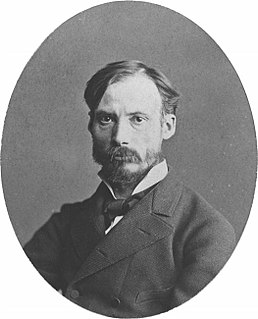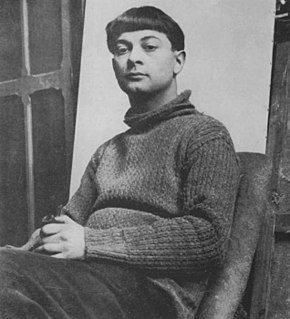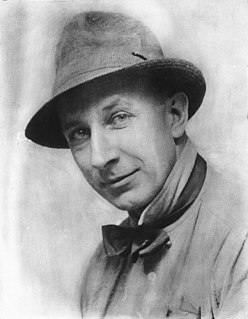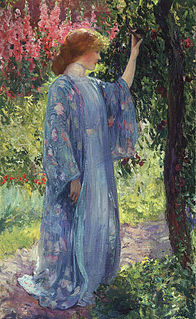
Seymour Joseph Guy (1824–1910), was an American romance painter.

Seymour Joseph Guy (1824–1910), was an American romance painter.
He was born and trained in London but moved to New York City, where he is known for genre works. [1] He trained for four years with the portrait painter Ambrosini Jerôme and married the daughter of an engraver, Anna Maria Barber, before his move to New York in 1854. [2] He was a member of the Sketch club and became friends with John George Brown, and they both began to paint genre works of children, probably inspired by their own, as Guy eventually had nine. [2] He died at his home in New York on December 10, 1910. [3]

Pierre-Auguste Renoir was a French artist who was a leading painter in the development of the Impressionist style. As a celebrator of beauty and especially feminine sensuality, it has been said that "Renoir is the final representative of a tradition which runs directly from Rubens to Watteau."

Frans Hals the Elder was a Dutch Golden Age painter, chiefly of individual and group portraits and of genre works, who lived and worked in Haarlem.

Moïse Kisling was a Polish-born French painter. He moved to Paris in 1910 at the age of 19, and became a French citizen in 1915, after serving and being wounded with the French Foreign Legion in World War I. He emigrated to the United States in 1940, after the fall of France, and returned there in 1946.

Visual art of the United States or American art is visual art made in the United States or by U.S. artists. Before colonization there were many flourishing traditions of Native American art, and where the Spanish colonized Spanish Colonial architecture and the accompanying styles in other media were quickly in place. Early colonial art on the East Coast initially relied on artists from Europe, with John White the earliest example. In the late 18th and early 19th centuries, artists primarily painted portraits, and some landscapes in a style based mainly on English painting. Furniture-makers imitating English styles and similar craftsmen were also established in the major cities, but in the English colonies, locally made pottery remained resolutely utilitarian until the 19th century, with fancy products imported.

George Wesley Bellows was an American realist painter, known for his bold depictions of urban life in New York City. He became, according to the Columbus Museum of Art, "the most acclaimed American artist of his generation".

Jacques Joseph Tissot, anglicized as James Tissot, was a French painter and illustrator. He was a successful painter of fashionable, modern scenes and society life in Paris before moving to London in 1871. A friend and mentor of Edgar Degas, Tissot also painted scenes and figures from the Bible.

James Ward was a British painter, particularly of animals, and an engraver.

Joaquín Sorolla y Bastida was a Spanish painter. Sorolla excelled in the painting of portraits, landscapes and monumental works of social and historical themes. His most typical works are characterized by a dexterous representation of the people and landscape under the bright sunlight of Spain and sunlit water.

William James Glackens was an American realist painter and one of the founders of the Ashcan School, which rejected the formal boundaries of artistic beauty laid-down by the conservative National Academy of Design. He is also known for his work in helping Albert C. Barnes to acquire the European paintings that form the nucleus of the famed Barnes Foundation in Philadelphia. His dark-hued, vibrantly painted street scenes and depictions of daily life in pre-WW I New York and Paris first established his reputation as a major artist. His later work was brighter in tone and showed the strong influence of Renoir. During much of his career as a painter, Glackens also worked as an illustrator for newspapers and magazines in Philadelphia and New York City.

John Seymour Lucas was a Victorian English historical and portrait painter, as well as an accomplished theatrical costume designer. He was born into an artistic London family, and originally trained as a woodcarver, but turned his attention to portrait painting and entered first the St. Martin's Lane Art School and later the Royal Academy Schools. Here he met fellow artist Marie Cornelissen from France, whom he married in 1877. Lucas' artistic education included extensive travels around Europe, particularly Holland and Spain, where he studied the Flemish and Spanish masters. He first started exhibiting in 1872, was elected an associate member of the Royal Academy in 1886, and a full Royal Academician in 1899.

Henry Inman was an American portrait, genre, and landscape painter.

Genre painting, a form of genre art, depicts aspects of everyday life by portraying ordinary people engaged in common activities. One common definition of a genre scene is that it shows figures to whom no identity can be attached either individually or collectively, thus distinguishing it from history paintings and portraits. A work would often be considered as a genre work even if it could be shown that the artist had used a known person—a member of his family, say—as a model. In this case it would depend on whether the work was likely to have been intended by the artist to be perceived as a portrait—sometimes a subjective question. The depictions can be realistic, imagined, or romanticized by the artist. Because of their familiar and frequently sentimental subject matter, genre paintings have often proven popular with the bourgeoisie, or middle class.

Jan Boeckhorst or Johann Bockhorst was a German-born Flemish Baroque painter and draughtsman. He was a versatile artist who produced history paintings, genre scenes and portraits in a style influenced by the trio of leading Baroque painters in Antwerp Peter Paul Rubens, Anthony van Dyck and Jacob Jordaens. Boeckhorst also worked as a designer of cartoons for tapestries.

Cornelis or Cornelius Ketel was a Dutch Mannerist painter, active in Elizabethan London from 1573 to 1581, and in Amsterdam till his death. Ketel, known essentially as a portrait-painter, was also a poet and orator, and from 1595 a sculptor as well.

Richard E. Miller was an American Impressionist painter and a member of the Giverny Colony of American Impressionists. Miller was primarily a figurative painter, known for his paintings of women posing languidly in interiors or outdoor settings. Miller grew up in St. Louis, studied in Paris, and then settled in Giverny. Upon his return to America, he settled briefly in Pasadena, California and then in the art colony of Provincetown, Massachusetts, where he remained for the rest of his life. Miller was a member of the National Academy of Design in New York and an award-winning painter in his era, honored in both France and Italy, and a winner of France's Legion of Honor. Over the past several decades, he has been the subject of a retrospective exhibition and his work has been reproduced extensively in exhibition catalogs and featured in a number of books on American Impressionism.

Decorative Impressionism is an art historical term that is credited to the art writer Christian Brinton, who first used it in 1911. Brinton titled an article on the American expatriate painter Frederick Carl Frieseke, one of the members of the famous Giverny Colony of American Impressionists, "The Decorative Impressionist."

The Merry Drinker is a painting by Frans Hals, from 1628–1630.

Man with a Beer Jug is an oil-on-canvas painting by the Dutch Golden Age painter Frans Hals, painted in the early 1630s, now in a private collection.

Portrait of a Man is an oil-on-canvas painting by the Dutch Golden Age painter Frans Hals, painted circa 1660 and now in the Frick Collection, New York City. The man has been mistakenly identified as Michiel de Ruyter.

Addison Thomas Millar was an American painter and artist; best known for his genre scenes and Orientalist paintings.
| Wikimedia Commons has media related to Seymour Joseph Guy . |